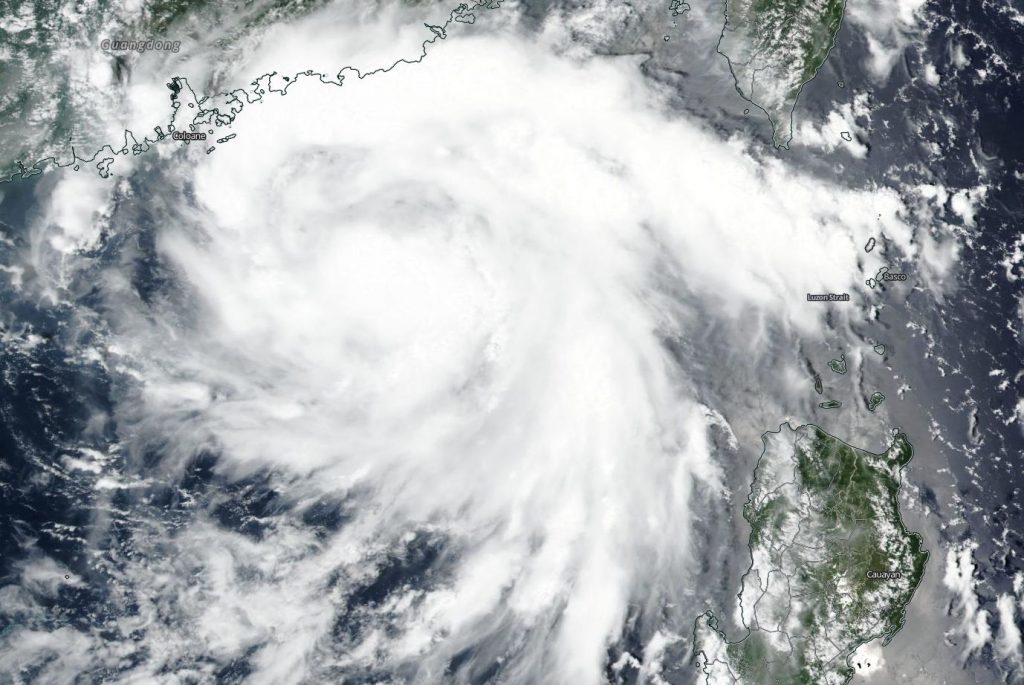Aug. 19, 2020 – NASA-NOAA’s Suomi NPP Satellite Snaps Tropical Storm Higos’ Landfall
NASA-NOAA’s Suomi NPP satellite provided forecasters with a visible image of the landfall of Tropical Storm Higos on Aug. 18.

The Visible Infrared Imaging Radiometer Suite (VIIRS) instrument aboard Suomi NPP captured a visible image of Higos as it was making landfall in the Guangdong Province of China on Aug. 19 at 0000 UTC (Aug. 18 at 8 p.m. EDT). Higos came ashore about 18 miles (30 km) south of Macau City. The VIIRS image showed strong thunderstorms wrapped into the center of circulation, and bands of thunderstorms over the South China Sea at the time of the satellite overpass.
On Aug. 19 at 0300 UTC (Aug. 18 at 11 p.m. EDT), Tropical storm Higos had maximum sustained winds near 40 knots (46 mph/74 kph). It was centered about 67 nautical miles west of Hong Kong, China, near latitude 22.3 degrees north and longitude 113.0 degrees east. Higos was weakening and moving to the northwest.
The Joint Typhoon Warning Center expects Higos to dissipate within a day over China.
NASA Researches Tropical Cyclones
Hurricanes/tropical cylcones are the most powerful weather events on Earth. NASA’s expertise in space and scientific exploration contributes to essential services provided to the American people by other federal agencies, such as hurricane weather forecasting.
For more than five decades, NASA has used the vantage point of space to understand and explore our home planet, improve lives and safeguard our future. NASA brings together technology, science, and unique global Earth observations to provide societal benefits and strengthen our nation. Advancing knowledge of our home planet contributes directly to America’s leadership in space and scientific exploration.

